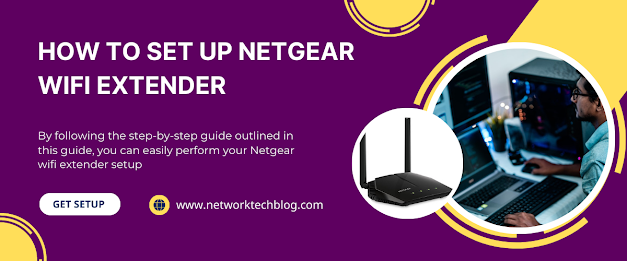Are you tired of encountering dead zones and weak WiFi signals in certain areas of your home or office? A Netgear WiFi extender might be just what you need. A WiFi extender amplifies your existing WiFi network, extending its coverage and eliminating dead spots. In this blog, we will provide you with a step-by-step guide on how to set up Netgear WiFi extender for optimal performance.
Step 1: Determine the Placement:
Before you begin the setup process, it is crucial to find the optimal location for your Netgear WiFi extender. Ideally, it should be placed between your main WiFi router and the area where you experience weak signal strength. Look for a spot where the extender can receive a strong signal from your router while also providing coverage to the desired area.
Step 2: Power Up the Extender:
Connect your Netgear WiFi extender to a power outlet near your router. Make sure the extender is receiving power by checking if the LED lights on the front panel are illuminated.
Step 3: Connect to the Extender:
Using your computer or mobile device, open the WiFi settings and locate the available networks. Look for the network name (SSID) that corresponds to your Netgear extender. It is usually labeled as "NETGEAR_EXT" followed by a series of characters.
Step 4: Establish a Connection:
Connect to the Netgear extender's network by selecting it and entering the default password provided with the extender. Once connected, open a web browser and you will be automatically redirected to the Netgear Genie setup wizard. If you are not redirected, enter "www.mywifiext.net" in the browser's address bar.
Step 5: Create an Account:
To proceed with the setup process, you will need to create a Netgear account. Fill in the required details and create a unique username and password. This account will allow you to manage and customize your extender settings in the future.
Step 6: Select the WiFi Network to Extend:
In the setup wizard, you will be prompted to select the network you want to extend. Choose your existing WiFi network from the list of available networks and enter the password if required. Click on the "Next" button to continue.
Step 7: Customize Extender Settings:
At this stage, you have the option to change your extender's network name (SSID) and password if desired. You can also choose to use the same network name and password as your main WiFi router to simplify connectivity. Once you have made your selections, click "Next" to proceed.
Step 8: Complete the Setup:
The final step involves applying the settings you have chosen. The setup wizard will confirm your settings and display a summary of the configuration. Verify the details and click on the "Finish" button to complete the setup process.
Step 9: Placement Optimization:
After the setup is complete, it is important to test the signal strength in different areas of your home or office. If you are still experiencing weak signals, consider adjusting the placement of your Netgear WiFi extender to achieve optimal coverage.
Conclusion:
A Netgear WiFi extender is an excellent solution to extend the reach of your WiFi network and eliminate dead spots. By following the step-by-step guide outlined in this blog, you can easily perform your Netgear wifi extender setup and enjoy enhanced WiFi coverage throughout your space. Remember to periodically update the firmware of your extender to ensure optimal performance. With a reliable WiFi extender in place, you can say goodbye to WiFi connectivity issues and enjoy seamless internet access wherever you go.

Comments
Post a Comment